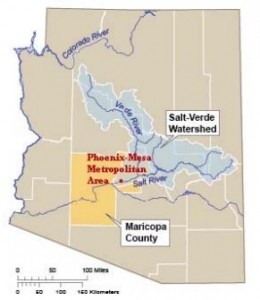Here in the arid West, land of the pioneer spirit and the rugged individual, we have a longstanding tradition of sticking someone else with the bill for our water projects.
The carefully constructed edifice that is Law of the (Colorado) River is complex set of legal and institutional deals among the basin’s water users built on a foundation of US taxpayers picking up the tab for the big water projects that make the whole thing work. In California, the histories of the Central Valley Project and the State Water Project are a rich tale of figuring out how to spread costs thinly across the largest possible base of taxpayers.
So it was with interest that I read the stories over the last few days about the way the parties warring over the Sacramento Delta have scratched out a deal on a package of projects everyone can agree on. Here’s Matt Weiser:
The Coalition to Support Near Term Delta Projects has met quietly for six months. Its three dozen members cover the range of animosity and accusation in the long-running water wars that have bedeviled the Delta, from environmentalists and levee managers to Delta farmers and Los Angeles water exporters.
Yet somehow, they have agreed to support 43 projects, including levee upgrades, habitat improvements, wildlife research and a proposal to recycle the Sacramento region’s sewage.
And Alex Breitler:
In one case, a group of about 80 farmers, environmentalists and water providers recently voiced support for more than 40 Delta projects totaling $770 million. Those projects will be discussed in a Senate committee hearing Monday.
Ah, but how to pay for all this? The California Legislative Analysts’ report for Monday’s hearing (pdf) suggests this effort is in keeping with the aforementioned longstanding tradition.


